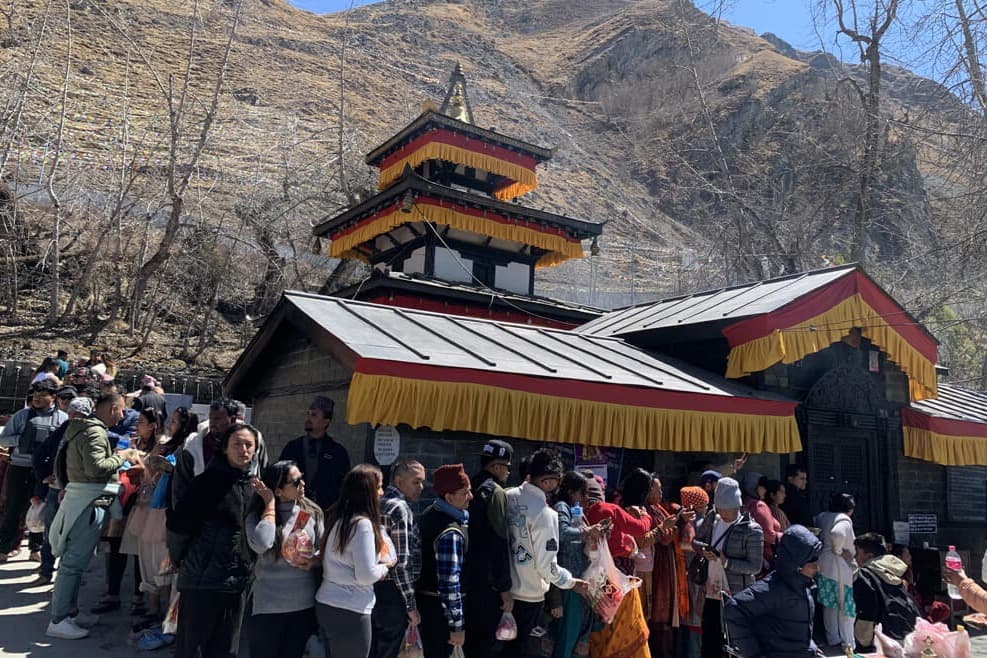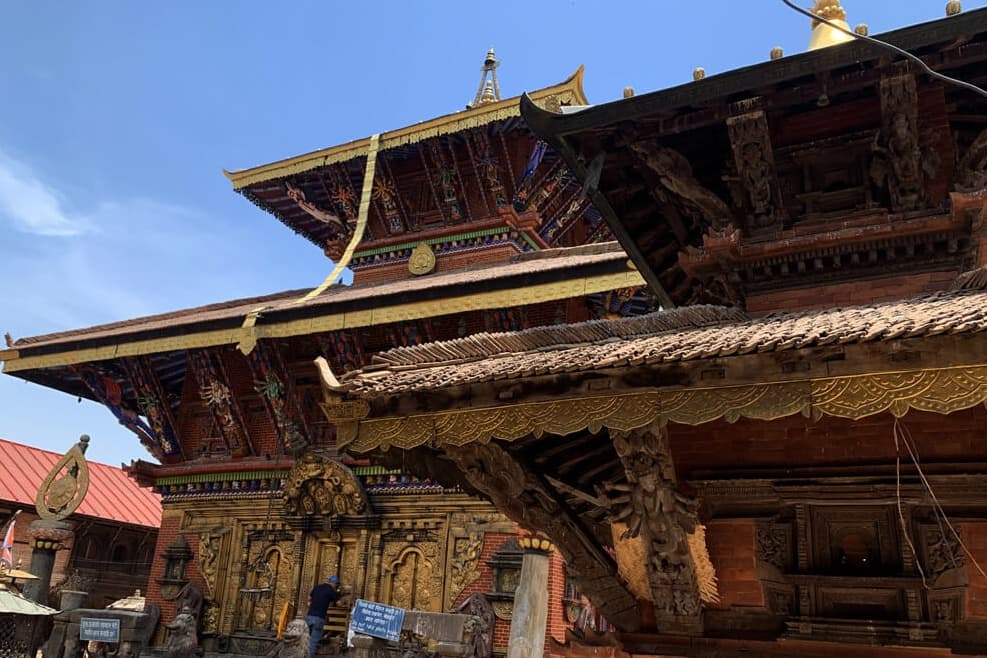Welcome to the culturally prosperous valley of Kathmandu. The valley itself is an open museum that has centuries-old temples, stupas, monasteries, and monumental sites. There are four Varahi Temples in the Kathmandu valley.
1. Vajra Varahi Temple in Chapagaon (South)
The Vajra Varahi Temple in Chapagaon is one of the four major Varahi temples in the Kathmandu valley. It is located approximately 16 km south of Kathmandu (Thamel) and 8 km south of Lagankhel. The temple is the only temple in Nepal without a Shikhar/Gajur (spire), which is the only case among Hindu temples.
Background
The temple is surrounded by a wooden area, consisting of 18.99 hectares. The main deity image will not be placed there for safety, which has been kept at Chhauni Museum and will be brought for Jatra. It is because the main deity image was theft and later found in B.S. 2025. There are three doors and different statues above the entrances: statue of Vrahmayini, Kaumari, Indrayini, Astamatrika, Bhairav, Garud, Naga, and Kalash.
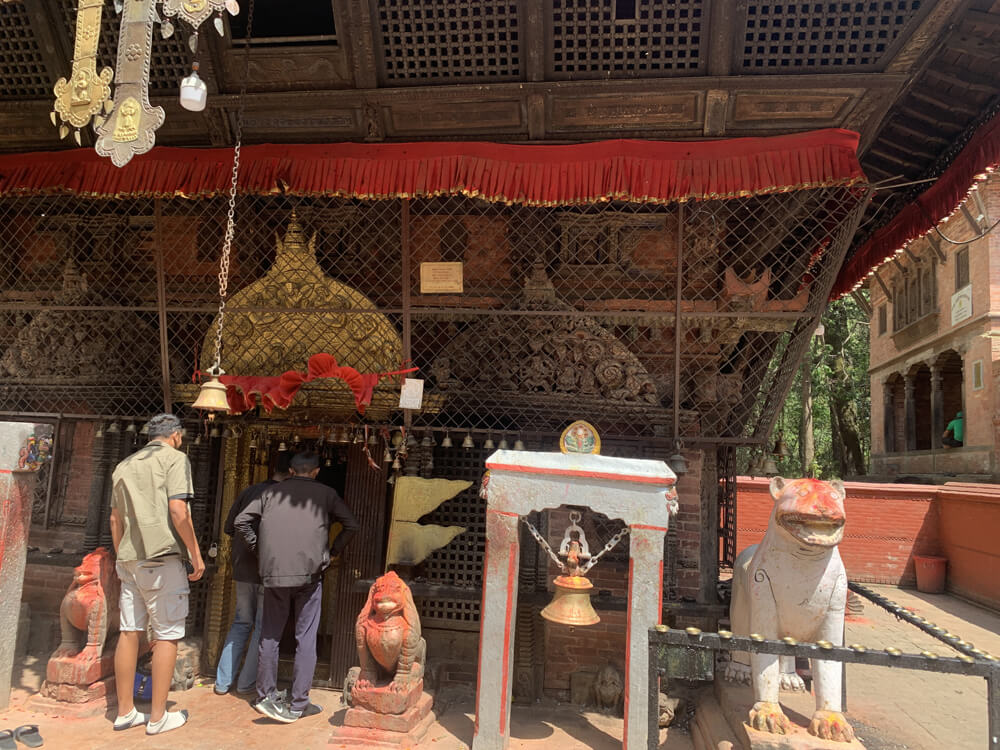
Established by Srinivas Malls in BS 784 (approx: 1665 CE), Chaitra on the 8th day of the waxing moon, Vajra Varahi temple is a real epitome of cultural prosperity. It is an important site for both Hindus and Buddhists as the temple is dedicated to Vajra Varahi, a Tantric goddess associated with power and protection.
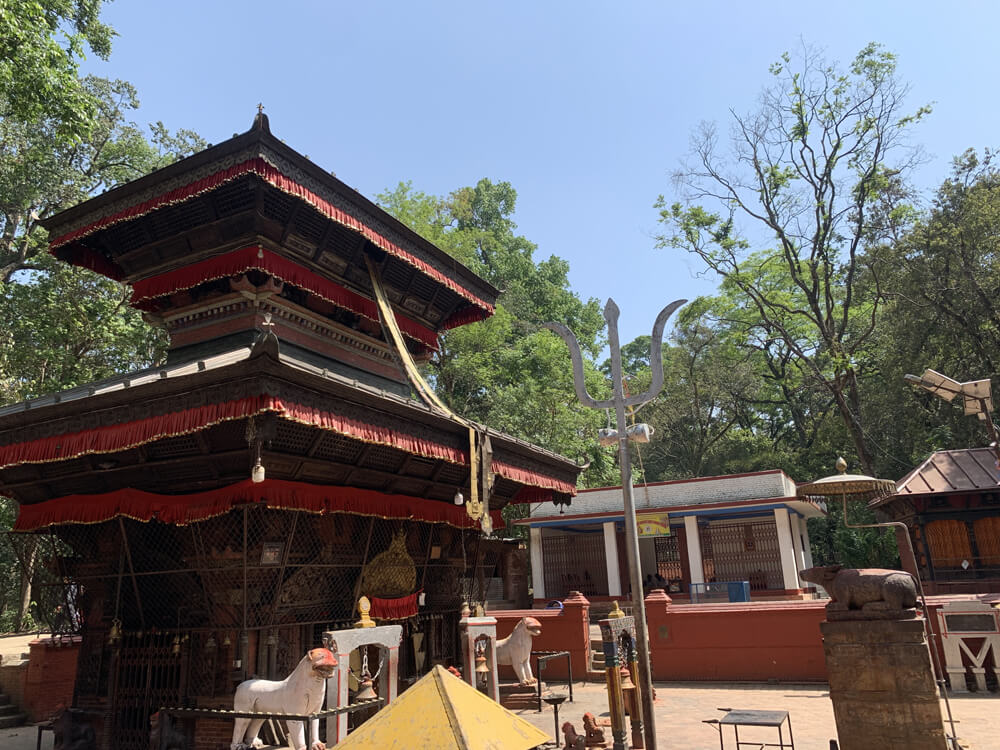
Religious Practices and Beliefs
Vajra Varahi is worshipped as a Matrika and is considered the consort of Ashta Bhairav. It is believed that if you offer milk and perform different rituals at the temple, your obstacles will be removed and you will receive blessings. The local priest here is known as Gubhaju, and there will be a rotation in the duties of a priest. The temple is also significant because of the tantric worship and practice, thus, both Hindu and Buddhist devotees pay homage at the temple.
Why Vajra ahead of Varahi?
Female form of Lord Varah- Varahi. 9th-12th century- effect of Vajrayana faith as Vajrayana flourished in the Kathmandu valley at that time. It could be the most possible reason.
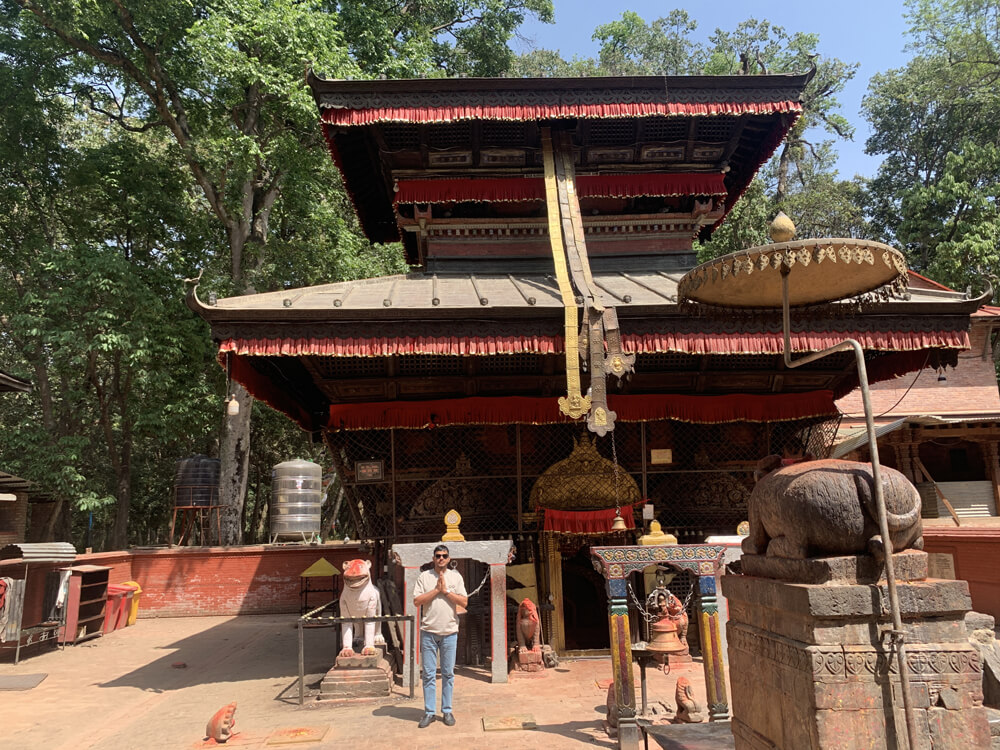
About Gajur/Spire
This is the only Hindu temple without Shikhar/Gajur, which is very much unusual for the temples in the Kathmandu valley. Actually the Gajur was made in Patan, but the main priest had a dream that if he will put Gajur on the temple, he will die vomiting. Thus, the plan to put Gajur was cancelled.
Golden Devi image: iconography
- Right hand: Lotus seed flower
- Left hand: fish
- Another right-hand: filled Patra
- Another left hand: Jalavindu Mudra-with ring finger
- Outside: two tiger statues that guard Devi. To preserve the temple, there is also the role of an ox statue, which is originally the vehicle of Lord Shiva
Vajra Varahi Jatra
- Celebrated in Mangsir (around November)
- Celebrated in Chaitra (around April)
- Animal sacrifice- uncastrated goat, male buffalo
2. Svet Varahi in Badegaun Lalitpur (North)
Swet Barahi is one of four revered Hindu temples in the Kathmandu valley. It is located in Badegaun Lalitpur, which is about 14 km from Thamel (central part of Kathmandu) and 6 km from Satdobato, the ring road. These temples are dedicated to the Tantric goddess Varahi, a powerful deity associated with protection, prosperity, and removal of obstacles.
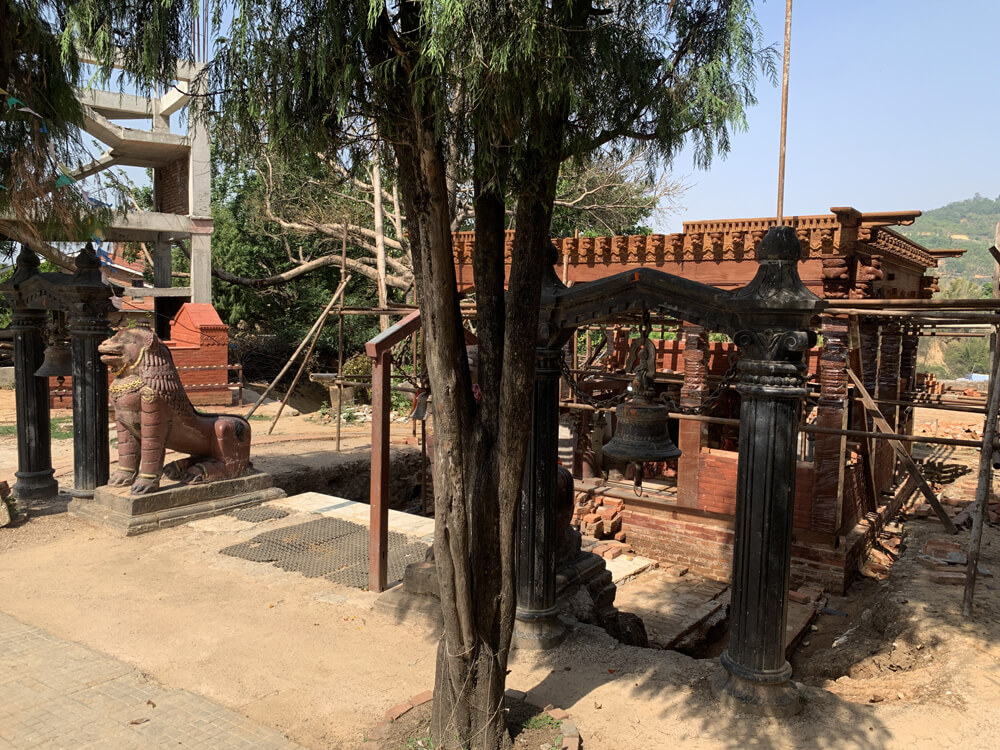
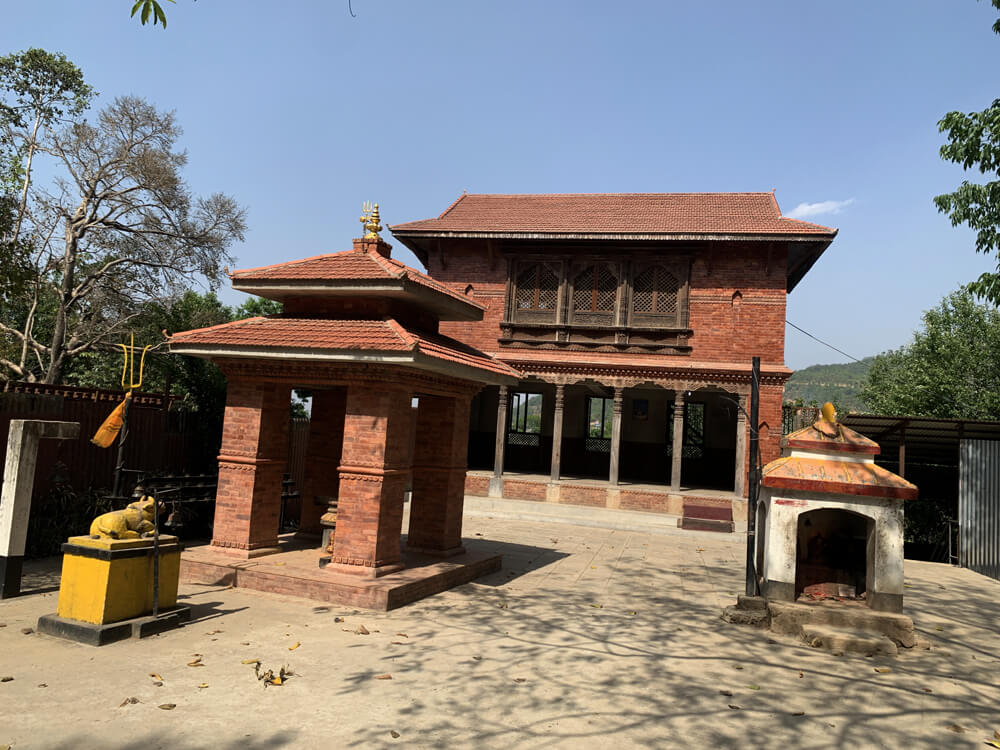

3. Nil Varahi in Bhaktapur (East)
Nil Barahi Temple is located in Madhyapur, Thimi, locally known in the territory of Bode, Bhaktapur. It is one of the four principal temples in the Kathmandu valley. The temple is in an elegant form of Newari architecture, which has intricate wooden carvings. The temple is an abode of the tantric goddess, who is the epitome of prosperity and protection.
.jpg)
The pagoda-style Nil Varahi temple is enshrined within a Gawakshya, which is a tantric tradition. The infrastructure of the temple is similar to the Chaitya, with a spire-like roof and metal plates covering the deity's image, symbolizing divine protection.
.jpg)
Nil Barahi Jatra
The Nil Barahi Jatra, also known as the Nil Barahi Dyo Pyakhan, is a 19-masked dance. The Jatra possesses various deities, including Nil Barahi, Bhairav, Kumari, Singha, Dwarpal, and Ganesh. Jatra uses different musical instruments like dha (drums), ta and bhusya (cymbals), ponga, and mwali (flutes).
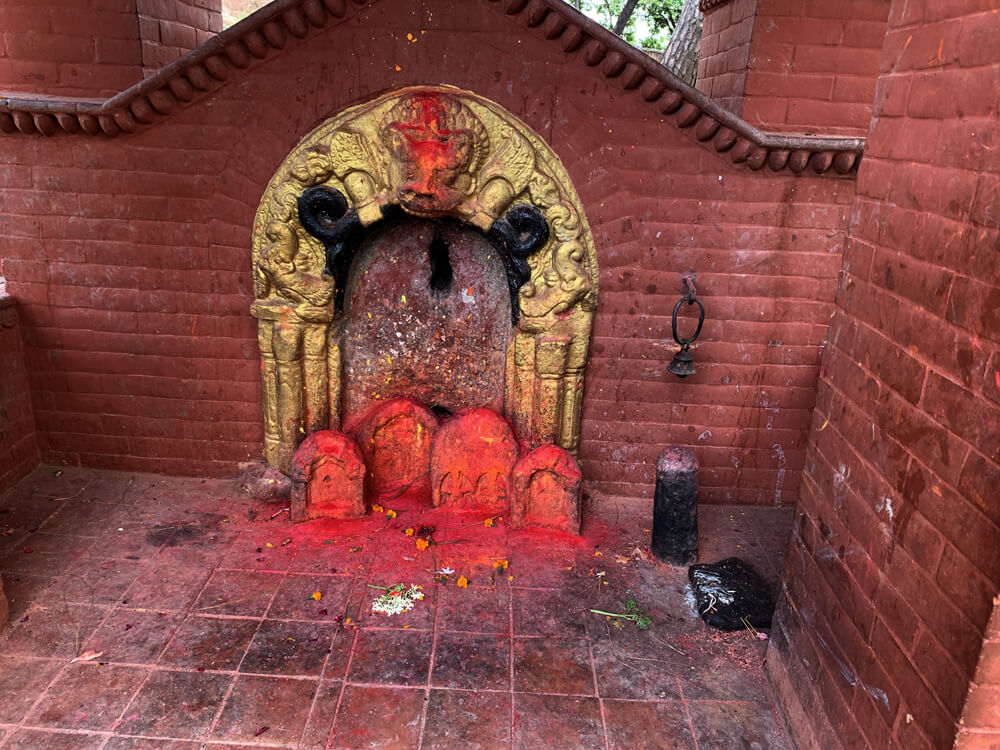
4. Dhumra Varaha Kathmandu (West)
Dhum Varahi Temple is located in the central part of Kathmandu, known as Handigaon. It is one of the four Varaha temples in the Kathmandu valley. The establishment of the temple dates back to the 8th century A.D. In the Lichhavi Period, during the reign of King Mandev, it was established with a carving on the stone sculptures. The temple is a huge poplar tree itself, but the roots don't touch the main idol.
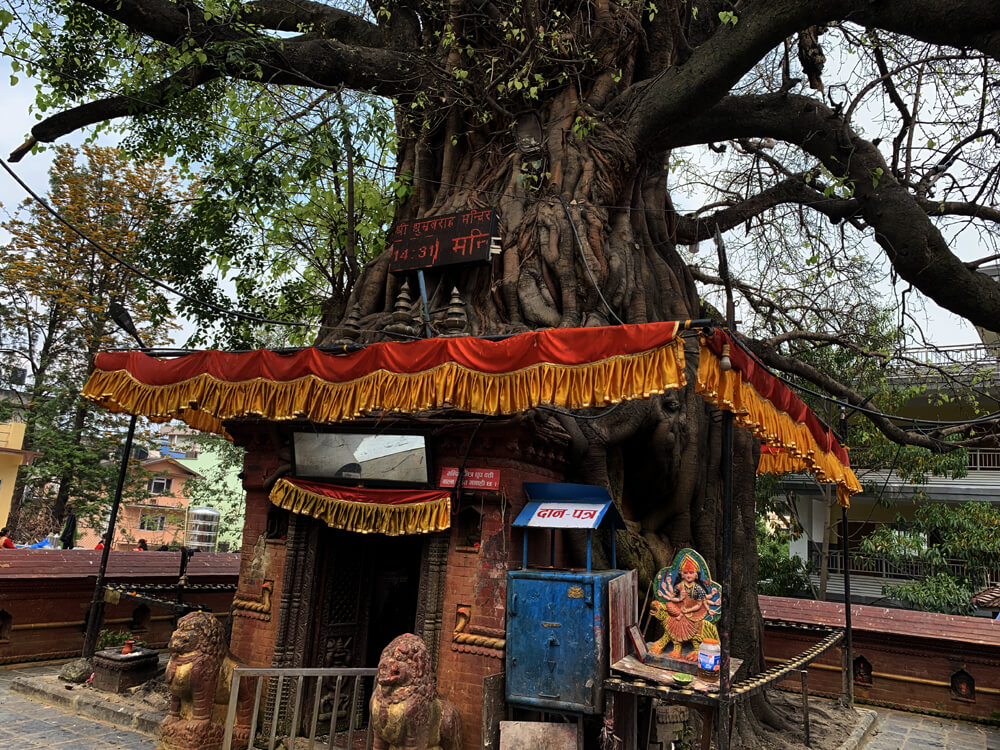
Iconography
The idol portrays a boar-headed goddess with a human body, holding a small goddess representing Mother Earth in her left hand.
Black color: reminiscent of night and smoke
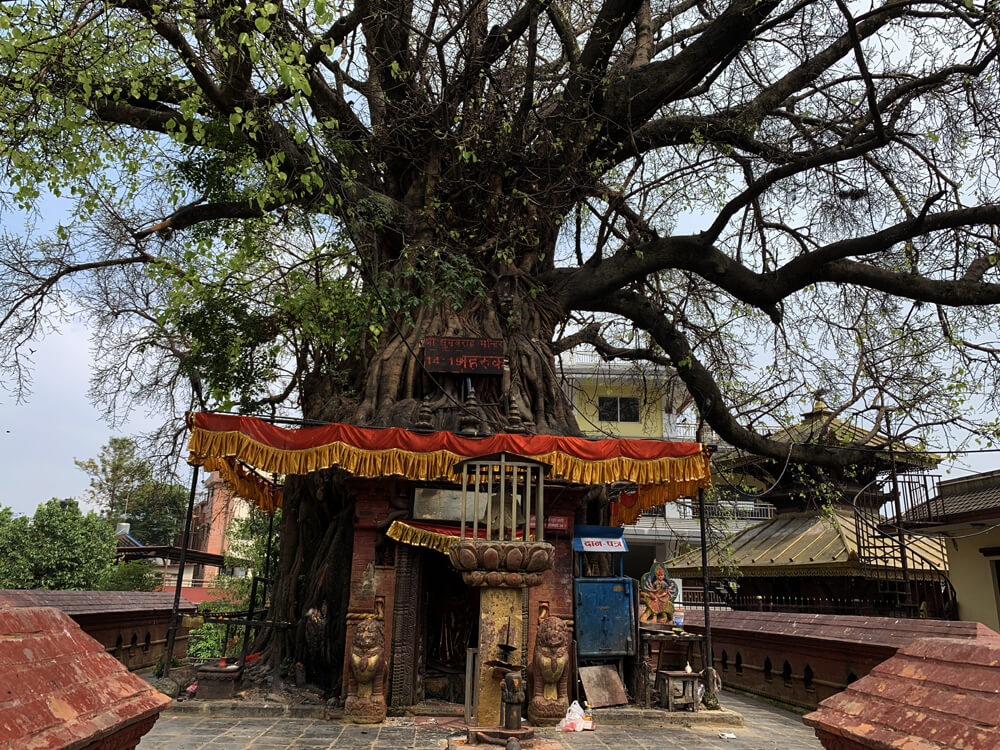
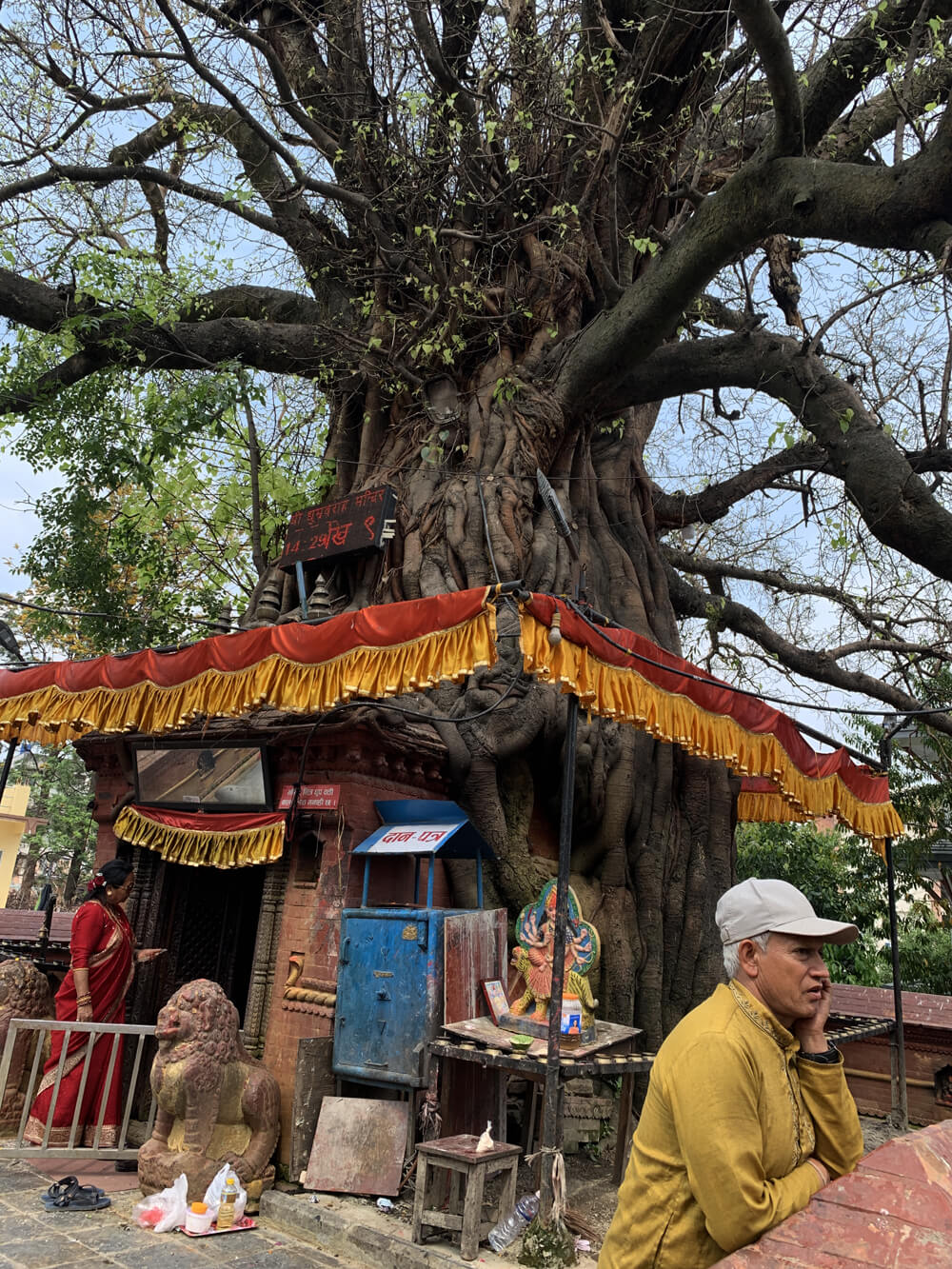
As it has been mentioned in saarang:
The temple dates back to the 5th Century B.S., but no clear record has been found; it was built in the Lichhavi period (King Mandev).
Among many avatars of Lord Visnu, the Varah Avatar is also worshipped as a feminine energy, which is Dhumra Varaha. The roots of a huge poplar tree completely cover the temple. However, these roots have not touched the main idol of the temple. The idol of God in this temple has the head of a boar and the body of a human. The right hand of the idol is on the waist, while the elbow of the left hand is holding a small goddess, who is depicted as Mother Earth. It is said that the color of the idol is black, like the color of night and smoke.
For more cultural sites and tours in Kathmandu valley, please feel free to contact Nepal Kameleon Holidays via:
WhatsApp: +977 9851159455
Email: [email protected]

